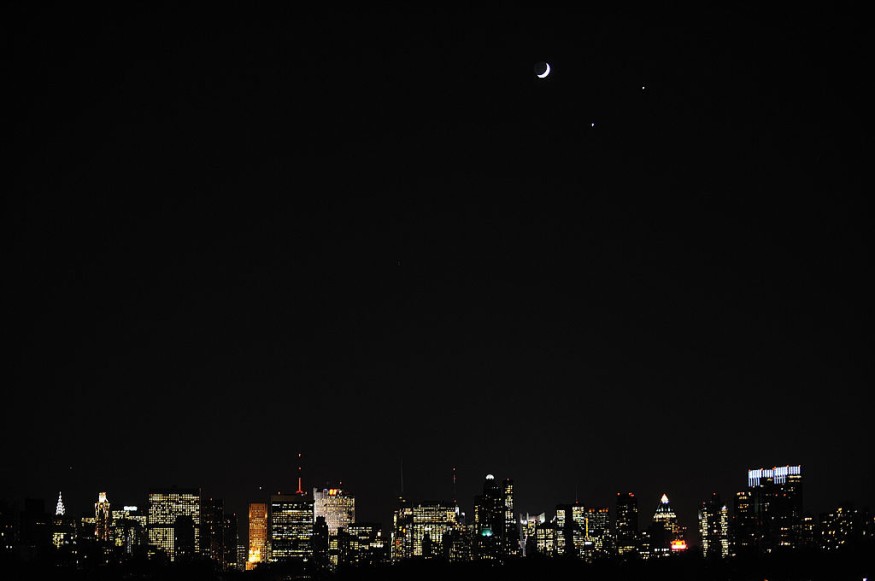
This week, four planets, namely Venus, Mars, Jupiter, as well as Saturn, will meet in a spectacular cosmic procession.
The Anticipated Four-Planet Alignment in The Sky
As per Live Science, the Moon would accompany the four celestial bodies during the last week of April. The heavenly joy first appeared on the 17th of April and would be seen on 20th of April.
According to astronomers from Space News, the greatest observation opportunity in the next nights would be around 5 A.M and 6 A.M Four celestial bodies are lined up behind the moonlight like swans in a queue in preparation for an extraordinary conjunction of the planetary system's five prominent stars.
Saturn, Mars, Venus, and even Jupiter will all be observable well above sky in the arctic circle in the wee small hours on the 23rd of April. In mid-June, Mercury could participate the procession of planets.
Astronomical configurations happen when the trajectories of celestial bodies put one another to the similar location of the cosmos as seen from Earth. These astronomical configurations are not uncommon, although they do seldom happen on a constant schedule.
Wherein the very last time apparently five planets coincided in the celestial sphere was in the year 2020, followed by coincidences during the year 2016 and 2005. It takes time for these partnerships to emerge. Throughout later March, Venus, Mars, with Saturn have shared the scenic beauty.
When observed from Earth, Mars as well as Saturn seemed smaller than the breadth of the full moon in the southeast daytime sky on April 4 and 5. Mars would be an orange squiggle to the left and underneath Saturn, whereas Venus will become a bolder glow to the left and beneath Mars. Jupiter would be at the deepest and model component point in the constellation, as per NBC News update
The brightness distinguishes celestial bodies from constellations in the horizon, according to Michelle Nichols, ministry of public viewing at Chicago's Adler Planetarium.
An hour to 45 minutes prior to actual sunrise, the celestial bodies will be most observable in the northern latitudes. The moonlight will be visible above the celestial sphere till the April 29, but the four celestial bodies will be in astronomical alignment until near July.
Mercury will emerge in the alignment as early as June 10 in locations with a level, eastern perspective, paving the way for the complete five-planet synchronization.
Line Up of Four Planets Behind the Moon
According to Nichols, the celestial bodies might seem to advance from east to southward. The greatest observing circumstances for the rendezvous would occur in later June.
Throughout the convergence, Uranus as well as Neptune will indeed be visible in the Higher Latitudes. Uranus will be observable in regions where there is less street lighting, amid Mercury and Mars. In a deep sufficient atmosphere, it may be visible with the human view, although optics will be necessary to observe it, according to Nichols. Viewing Neptune will need the use of a binocular.
Those interested in catching a peek of the convergence will not require a telescope to see the celestial bodies. Furthermore, in an interview of DailyMail with Jake Foster, an astronomical teaching specialist at Royal Museums Greenwich, claimed that the conjunction will be visible until early May.
Venus will be the clearest of the four planets, emitting a dazzling white glow. Jupiter will be the next best looking, similarly glowing white. Saturn will appear noticeably dimmer compared to the remaining three planets. Mars will stand out from the rest due to its coloration, emerging as a brilliant orange source of light to the human vision.
Related article : The Hottest Rock Ever Discovered in the Earth's Crust Confirmed
© 2025 NatureWorldNews.com All rights reserved. Do not reproduce without permission.





